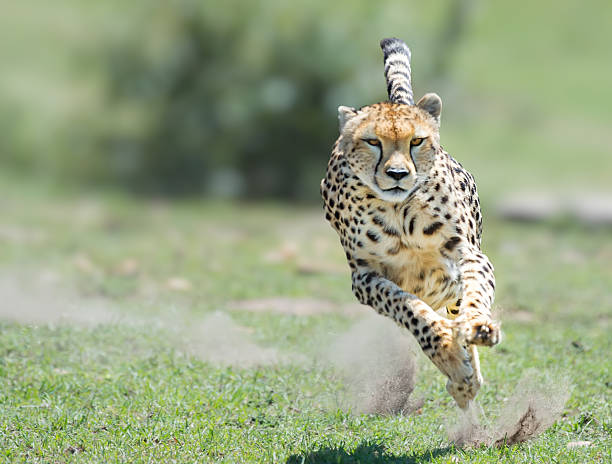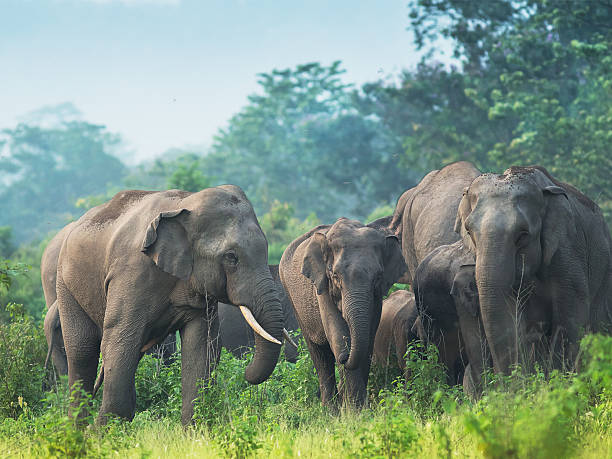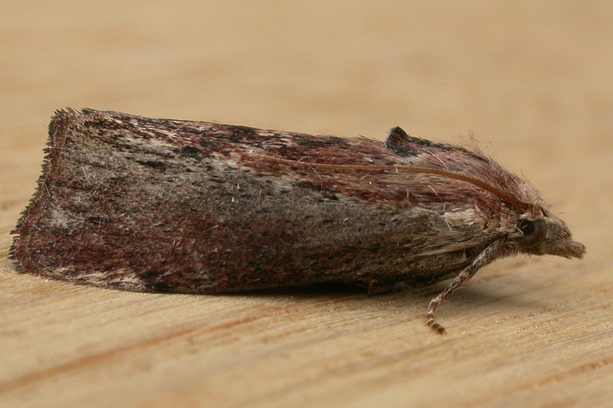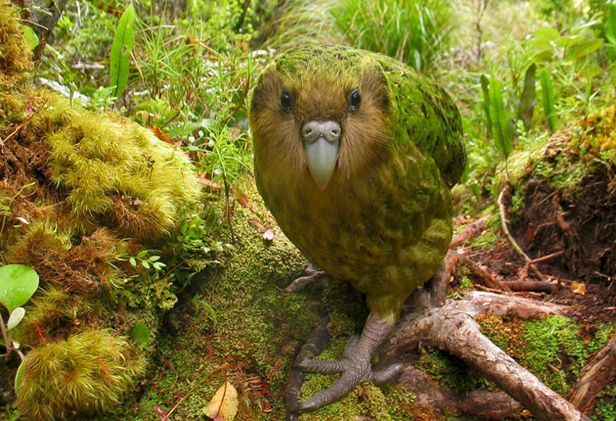The cheetah, Acinonyx jubatus, is the undisputed speed champion of the animal kingdom. Capable of accelerating from a standstill to 70 miles per hour (113 kilometers per hour) in just a few seconds, it represents the pinnacle of natural engineering in terms of speed, agility, and efficiency. Its remarkable abilities have fascinated biologists, physicists, and engineers alike, inspiring studies that seek to unravel how a living creature can achieve such explosive performance. The cheetah’s speed is not the result of any single feature but a symphony of specialized adaptations—musculoskeletal, respiratory, neurological, and biomechanical—that work in perfect harmony.
To truly understand the cheetah’s extraordinary speed, one must look beneath its spotted coat and explore the fine-tuned anatomy and physiology that allow it to perform feats of acceleration unmatched by any other land mammal. Its body has evolved specifically for sprinting across open savannas, with every muscle fiber, bone, tendon, and organ optimized for one goal: catching prey in the shortest time possible.
The Evolutionary Background of the Cheetah
The cheetah’s speed is a product of millions of years of evolution. Fossil evidence suggests that ancestors of modern cheetahs appeared around 3 to 4 million years ago in Africa. Early members of the genus Acinonyx were already adapted for fast running, though not at the level of today’s cheetah. These prehistoric cats faced intense competition from other large predators like lions, hyenas, and leopards, forcing them to evolve a different hunting strategy based on speed rather than strength or stealth.
Unlike lions, which rely on cooperative hunting and brute power, or leopards, which depend on ambush tactics, cheetahs became pursuit specialists. They evolved to chase and trip swift prey such as gazelles and impalas in open grasslands. Over generations, natural selection favored individuals with lighter frames, longer limbs, and better oxygen delivery systems. This evolutionary path refined their bodies into some of the most efficient running machines in nature.
Interestingly, genetic studies show that cheetahs underwent a severe population bottleneck around 10,000 years ago, possibly during the last Ice Age. This event drastically reduced genetic diversity, making modern cheetahs genetically similar to one another. Despite this, their physical design for speed remains among the most specialized and successful in the animal world.
The Body Built for Speed
At first glance, the cheetah appears slender and delicate compared to other big cats. Yet this seemingly fragile frame hides immense power. Everything about its anatomy—from its bones to its muscles to its respiratory system—serves the singular purpose of achieving rapid acceleration and high top speeds.
The cheetah’s body is long and lightweight, weighing between 75 to 140 pounds (34 to 64 kilograms) depending on sex and region. Its long limbs and flexible spine give it a sleek, aerodynamic silhouette, minimizing air resistance. The limbs are built for rapid movement rather than endurance; cheetahs are not long-distance runners but sprinters capable of short, explosive bursts of speed lasting typically 20 to 30 seconds.
A cheetah’s stride length—the distance covered in one leap—can reach up to 25 feet (7.6 meters). At top speed, it takes around four strides per second. This astonishing combination of long strides and high frequency is the result of several critical anatomical adaptations working in harmony.
The Flexible Spine: Nature’s Spring
Perhaps the most crucial adaptation for speed in the cheetah is its exceptionally flexible spine. This spine acts almost like a giant spring, storing and releasing energy with each stride. During a sprint, the cheetah’s back flexes and extends dramatically, allowing its hind legs to reach far forward beneath its body and then push off powerfully behind.
This spinal flexibility effectively doubles the stride length. When the spine is fully flexed, the hind and forelimbs overlap under the body. When fully extended, the limbs are stretched to their maximum distance apart. This dynamic motion not only increases stride length but also enhances propulsion efficiency, much like the suspension system in a high-performance race car.
The vertebrae in the cheetah’s back are more elongated and less rigidly connected than in other big cats, providing greater range of motion. Ligaments along the spine store elastic energy during each stride, which is then released to power the next one. This cycle of energy storage and release minimizes muscular effort, allowing the cheetah to maintain extreme acceleration with less fatigue.
Muscle Composition and Power Generation
Speed depends on muscle power, and the cheetah’s muscles are uniquely adapted for rapid, explosive contraction. The majority of their limb muscles consist of fast-twitch fibers, specifically type IIx fibers, which are capable of generating immense power but fatigue quickly. These fibers are ideal for short bursts of speed rather than endurance.
Research on cheetah muscle tissue has shown that these fast-twitch fibers are densely packed with contractile proteins such as actin and myosin, which enable rapid force generation. Moreover, the muscle cells contain abundant enzymes for anaerobic metabolism, allowing them to produce energy quickly even when oxygen supply is limited during high-speed chases.
In contrast, endurance animals such as wolves or antelopes have a higher proportion of slow-twitch fibers designed for sustained activity. The cheetah’s muscular makeup reflects its evolutionary specialization for short, high-intensity sprints that last less than a minute.
Limb Structure and Tendon Efficiency
A cheetah’s limbs are built for lightweight strength. Their leg bones are longer and slimmer than those of lions or leopards, reducing rotational inertia and allowing for quicker limb movement. The joints are designed to maximize extension and flexibility, and the shoulder blades are free-floating, unattached by a clavicle, allowing for greater stride reach.
Tendons in the cheetah’s legs act like elastic bands, storing energy when stretched and releasing it during propulsion. This mechanism is similar to that of a sprinter’s running shoes, which use elastic materials to conserve energy. The Achilles tendon in particular plays a vital role in returning energy to the limb during push-off, reducing muscular effort and increasing efficiency.
Another remarkable feature is the semi-retractable claws. Unlike most big cats, whose claws fully retract, cheetahs have claws that remain partially extended even when relaxed. This provides extra traction, similar to the spikes on a sprinter’s shoes, helping them grip the ground and accelerate without slipping.
Tail as a Dynamic Stabilizer
A cheetah’s long, muscular tail acts as both a counterbalance and a steering mechanism during high-speed pursuits. It can reach lengths of up to 2.5 to 3 feet (0.75 to 0.9 meters), and its flexibility allows the cheetah to make lightning-fast turns without losing balance.
During a chase, when the cheetah changes direction, it swings its tail opposite to the turn, creating angular momentum that stabilizes its body. This is similar to how a tightrope walker uses a balancing pole or how a race car’s spoiler helps it stay on track. This adaptation is crucial because the prey often makes sudden zigzag maneuvers to escape, and maintaining stability at 70 mph requires precise control.
The tail also assists in adjusting body orientation mid-air during leaps, allowing the cheetah to land optimally for the next stride. Without this dynamic stabilizer, high-speed chases would result in frequent loss of balance or momentum.
Aerodynamics and Body Design
Cheetahs have a sleek, aerodynamic body designed to minimize air resistance. Their small, rounded heads reduce drag, and their nostrils are large, allowing for maximum airflow during intense activity. Their short, lightweight fur also reduces turbulence, helping them maintain smooth airflow over the body.
The limbs are positioned directly under the body rather than to the sides, giving the cheetah a straight, streamlined posture while running. This design ensures that more of the animal’s energy goes into forward motion rather than lateral movement. The long, narrow tail tapers at the end, reducing drag while maintaining balance.
In a way, the cheetah’s body is the biological equivalent of an aerodynamic race car—every curve and proportion serves to enhance performance and efficiency during motion.
Breathing and Oxygen Delivery
Reaching and maintaining 70 mph demands an immense amount of oxygen and energy. The cheetah’s respiratory and cardiovascular systems are adapted to meet these demands through rapid oxygen intake and delivery.
During a sprint, a cheetah’s respiratory rate can rise to 150 breaths per minute. Its nostrils are wide and its nasal passages enlarged to facilitate high airflow. The lungs and heart are proportionally larger than in most other cats, capable of pumping oxygen-rich blood efficiently to muscles during the chase.
As the cheetah runs, its flexible spine assists breathing by compressing and expanding the chest cavity with each stride. When the spine flexes and the limbs come together, the lungs are compressed; when the spine extends and the limbs spread apart, the chest cavity expands, drawing in air. This natural coordination between stride and breathing ensures efficient ventilation, effectively turning each gallop into a breath.
Neuromuscular Coordination and Reflexes
Speed alone is useless without control. The cheetah’s nervous system and sensory organs are fine-tuned to deliver lightning-fast coordination and reaction times. Its brain processes visual and spatial information rapidly, allowing it to adjust its stride, direction, and posture in fractions of a second.
Cheetahs rely heavily on sight rather than smell when hunting. Their large, forward-facing eyes provide binocular vision and depth perception, critical for tracking fast-moving prey. The retina contains a high density of photoreceptors adapted for daylight vision, allowing precise detection of motion and distance.
Motor neurons in the spinal cord transmit signals to muscles with exceptional speed, and the cheetah’s reflexes are among the fastest of any mammal. This enables the precise timing required for acceleration, turning, and braking during high-speed chases.
The Art of Acceleration
Acceleration is the hallmark of the cheetah’s hunting strategy. From a standing start, it can reach 60 mph in about three seconds—faster than most sports cars. This acceleration is achieved through synchronized limb motion, powerful muscle contractions, and efficient energy transfer from the spine and tendons.
The initial push-off relies on the hind limbs, which act like powerful pistons. The muscles of the back and thighs contract explosively, propelling the cheetah forward. As momentum builds, the forelimbs extend to maximize stride length, while the tail and spine coordinate balance and direction.
At maximum speed, the cheetah spends more than half of each stride completely airborne. It alternates between two phases: one where the limbs are under the body (the gathered phase) and one where they are fully extended (the extended phase). The transition between these phases generates a rhythmic motion that maintains smooth acceleration until the cheetah reaches its peak velocity.
The Limits of Speed and Endurance
Despite its incredible speed, the cheetah can sustain a sprint for only 20 to 30 seconds. The reason lies in physiology. Rapid muscle contractions generate enormous amounts of heat, and within half a minute, the cheetah’s body temperature can rise dangerously high—up to 105°F (40.5°C). Continuing beyond this point risks overheating and organ damage.
In addition, the cheetah’s anaerobic metabolism during a sprint leads to a buildup of lactic acid in muscles, causing fatigue. This is why a cheetah often needs 20 to 30 minutes to recover after a chase, whether it succeeds or fails. During this recovery period, it breathes heavily, its heart pounding to clear lactic acid and restore oxygen balance.
Thus, the cheetah’s power comes at a cost—it trades endurance for speed. In evolutionary terms, this trade-off makes sense, as cheetahs rely on quick kills rather than prolonged pursuits.
The Role of Strategy and Hunting Behavior
The cheetah’s anatomy provides the tools for speed, but its hunting strategy makes use of those tools with precision. A typical hunt involves stealth, timing, and explosive movement. Cheetahs usually stalk within 100 to 200 feet of their prey, using tall grass or terrain for cover. Once close enough, they sprint to close the gap, relying on speed to overtake their target.
The prey, often gazelles or impalas, can match the cheetah in agility but not acceleration. The chase typically lasts 15 to 30 seconds, during which the cheetah must make rapid directional changes as the prey zigzags to escape. Once close enough, it uses its dewclaw—a sharp claw on the inner side of the forelimb—to trip the prey, then goes for the throat.
Cheetahs usually hunt during daylight to take advantage of their exceptional vision and to avoid competition with nocturnal predators like lions and hyenas. Their hunting efficiency varies between 40 to 60 percent, which is high compared to most big cats.
The Biomechanics of Turning and Maneuvering
Running fast is one challenge; changing direction at high speed is another. The cheetah’s ability to make sharp turns without losing balance is due to its flexible spine, powerful forelimbs, and tail coordination. During a turn, the inner limbs push off differently from the outer limbs, generating torque that changes the direction of motion.
The claws dig into the ground, providing traction, while the tail swings in the opposite direction to counterbalance the body’s angular momentum. This coordinated motion allows the cheetah to make turns of over 90 degrees at speeds exceeding 50 mph, an ability no other mammal possesses at that velocity.
High-speed camera studies have shown that during these turns, the cheetah lowers its body and shifts its weight toward the inside of the curve, much like a motorcycle racer leaning into a turn. This lowers the center of gravity and prevents skidding.
Energy Efficiency and Heat Management
The cheetah’s sprinting demands extreme energy output, but the animal also possesses mechanisms to manage heat and energy expenditure. Its coat, though spotted and relatively short, helps dissipate heat by allowing air to circulate close to the skin. Large nasal passages and sinuses assist in heat exchange by cooling the blood flowing to the brain.
After a chase, cheetahs often rest in the shade, panting heavily to release excess heat. Their rapid breathing accelerates evaporative cooling, similar to how sweating works in humans. The circulatory system plays a key role in preventing overheating by redirecting blood flow toward the skin and extremities.
The Role of Genetics and Development
Genetic studies have identified several genes associated with muscle function, metabolism, and neuromuscular coordination that are highly expressed in cheetahs. These genes contribute to their high-speed performance and energy metabolism efficiency.
From birth, cheetah cubs display a playful behavior that mimics chasing and pouncing, essential for developing coordination and muscle strength. As they grow, their muscles and bones strengthen rapidly, and by the time they are one year old, they are capable of running at impressive speeds during practice hunts.
Cheetah Speed vs. Other Animals
While other animals are fast in their own right, none match the cheetah’s acceleration and peak land speed. The pronghorn antelope of North America can run at 55 mph for longer durations, and the lion can reach about 50 mph but only for short distances. Greyhounds, the fastest domestic dogs, top out around 45 mph. The cheetah’s unique combination of rapid acceleration, flexible anatomy, and traction-enhancing claws make it the ultimate terrestrial sprinter.
The Future of Cheetahs and Conservation
Despite their incredible abilities, cheetahs face serious threats in the modern world. Habitat loss, human encroachment, and declining prey populations have reduced their numbers drastically. Once widespread across Africa, the Middle East, and India, cheetahs are now confined to fragmented populations primarily in sub-Saharan Africa, with fewer than 7,000 individuals remaining in the wild.
Their specialization for speed makes them less adaptable to changing environments. They require large open spaces for hunting and are often outcompeted by larger predators when forced into smaller territories. Conservation programs focus on preserving these open habitats, preventing poaching, and supporting genetic diversity through managed breeding.
Cheetah-Inspired Science and Engineering
The cheetah’s biomechanics have inspired research in robotics and human athletics. Engineers study cheetah motion to design agile, fast-running robots capable of navigating complex terrain. In sports science, understanding the cheetah’s energy efficiency and stride dynamics helps improve sprinting techniques and athletic training methods.
Cheetahs demonstrate how nature can achieve near-perfect performance through evolutionary fine-tuning. Their combination of power, precision, and balance offers valuable lessons in biology, physics, and design.
Conclusion
The cheetah’s ability to reach speeds of 70 mph is not due to a single trait but the seamless integration of numerous physiological and anatomical features. Its flexible spine, powerful muscles, aerodynamic form, efficient respiratory system, and finely tuned reflexes all contribute to making it the fastest land animal on Earth.
For a few breathtaking seconds, the cheetah embodies nature’s ultimate expression of speed and grace—a living testament to evolution’s capacity to sculpt perfection through adaptation. Behind every lightning-fast chase across the African plains lies millions of years of evolutionary refinement, a delicate balance of biology and physics working together in flawless harmony. The cheetah’s sprint is not just an act of hunting; it is a masterpiece of motion, power, and natural design.






